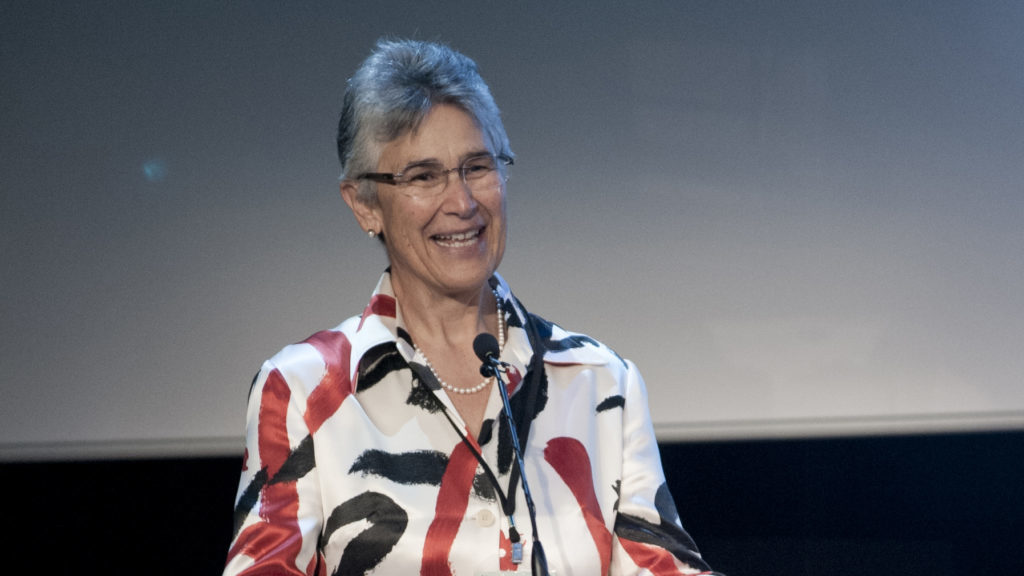
Of all the food produced in the world, nearly one-third will never be eaten. Some is left to rot in fields after harvest, some perishes in transport and processing or in a giant supermarket dumpster, and some will make it to the bottom shelf of your fridge – before being thrown in the trash.
The UN Food and Agriculture Organization (FAO) estimates that food lost and thrown away contributes 8 per cent of all global greenhouse gas emissions. If it were a country, food waste would be the world’s third biggest emitter after the U.S. and China.
Yolanda Kakabadse, International President of the World Wide Fund For Nature (WWF), calls growing concern about food waste a “late awakening.” Back in her term as Minister of Environment for the Republic of Ecuador in the 1990s, food loss and waste weren’t high on the agenda, she said in an interview from Quito, Ecuador. Rather, the public concern then was about the paradox of plenty. How could poorer populations be starving when there was so much food being produced globally? The main issue was inequitable distribution, not sustainability or climate change.
Things have changed since then. Concerns about how to distribute abundance have given way to discussions about how to sustainably produce enough to feed a growing population in the future – a conversation sparked by the realization that industrial agriculture is contributing to destroying ecosystems and depleting resources that food production depends on.
“I wish I had known about the magnitude of this problem before,” said Kakabadse. “We started seeing food waste as a problem only by linking climate change with food production, market and retailer behavior, and consumer patterns.”
Inefficient energy, water and land use for agriculture is a challenge, but it also presents an opportunity. A quarter of freshwater used in farming goes to food that is either lost or wasted, according to the FAO. It estimates that farming takes up cropland area the size of China, contributing to deforestation and greenhouse gases. Reducing food waste would mean putting these resources to better use, effectively getting more food on people’s plates without increasing the environmental costs of production.
As WWF International’s President, Kakabadse is one of 30 “Global Champions” behind a recently-launched initiative, Champions 12.3, which focuses on tackling the issue of food loss and waste.
The Champions are working to influence governments and raise awareness of United Nations Sustainable Development Goal 12.3, which aims to halve global food waste and reduce food losses by 2030. They also strive to lead by example.
The Rockefeller Foundation, a 12.3 Champion, has pledged $130 million in funding through its YieldWise initiative to improve production of fruit, vegetables and staple crops in Kenya, Nigeria, and Tanzania, where as much as 50 per cent of total harvests are lost, according to the U.S. foundation. The initiative looks at fixing the broken links in the food chain from farm to market. YieldWise is training farmers and facilitating buyer agreements between farmer groups and companies like Coca-Cola and Cargill, ensuring farmers get steady access to markets. YieldWise is also working with the government of Tanzania to supply proper storage solutions, such as metal silos and hermetic cocoons, to smallholder farmers.
According to Kakabadse, the hardest part of the Champions’ task will be dealing with the food lost directly after harvest. The FAO has found that most food is lost or wasted before it enters consumers’ homes, and that the problem is most acute in developing countries. The key challenge will be getting governments to commit to improving infrastructure so that harvesting, transporting and refrigerating crops becomes easier for farmers, who often live in isolated rural areas.
“That is where you require the participation of governments and not only in supporting the producers,” but also in helping finding solutions between producers and the export sector, said Kakabadse.
Changing consumer behaviour is a critical component in the fight against food waste. That means teaching consumers not to blindly abide by expiration dates and to rely more on their senses to see if, for example, a mushy tomato could be used for cooking rather than just thrown away. Other approaches include educating households on how to buy just what they will consume, and getting stores to throw away less food. In wealthier countries, this is a matter of economics as well as environment: $680 billion worth of food is lost or wasted every year in industrialized countries, according to the FAO.
“This is not a South or North issue,” said Kakabadse. “The problem arises on both sides. The consumer behavior of waste is happening in Oslo and Quito, my town. All of us are responsible for addressing consumer behaviors.”
Yolanda Kakabadse became WWF’s International President in 2010 after having served as Ecuador’s Minister of Environment. Her work with environmental conservation spans decades, dating back to 1979 as executive director of Fundación Natura in Quito, Ecuador.